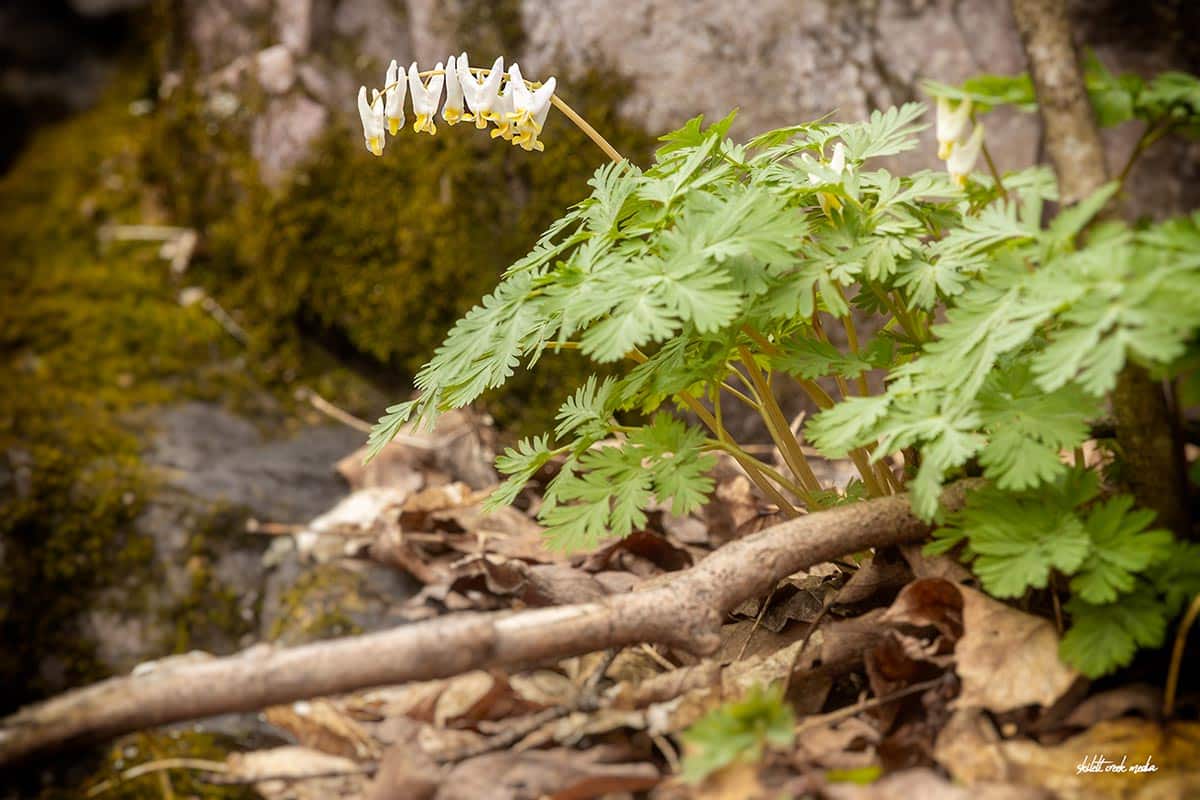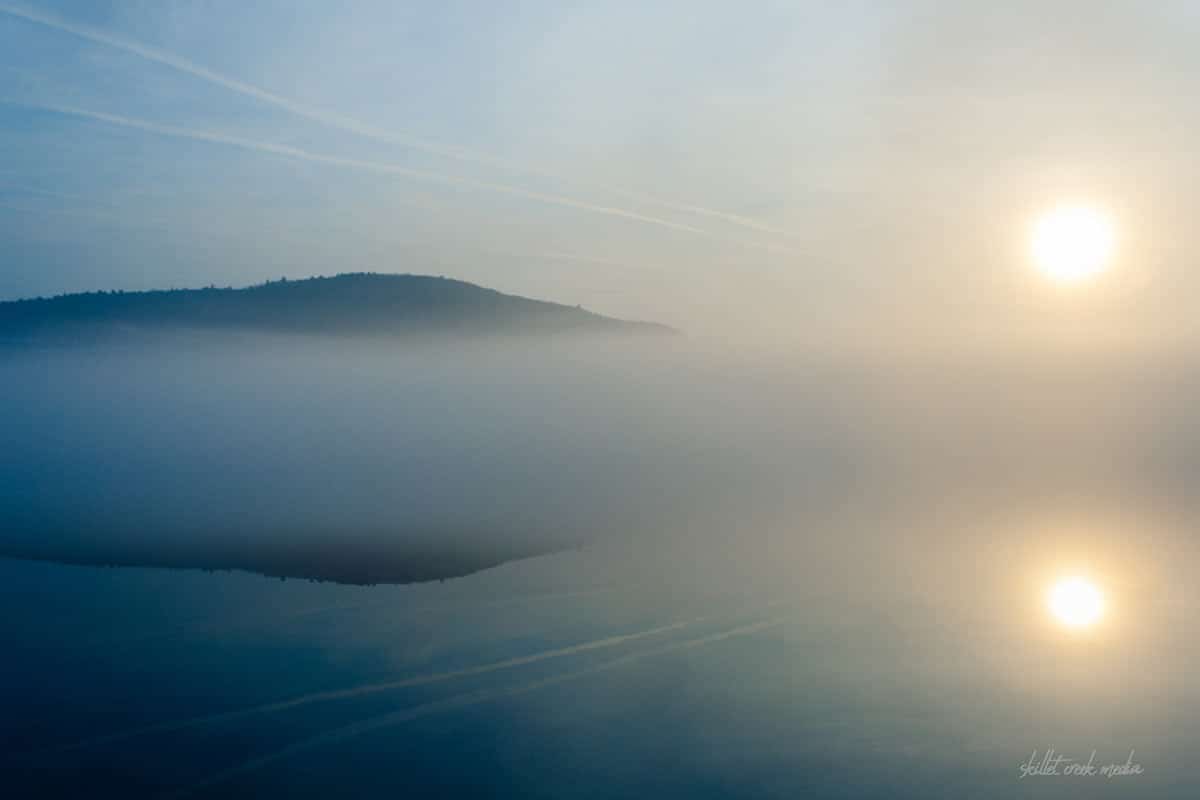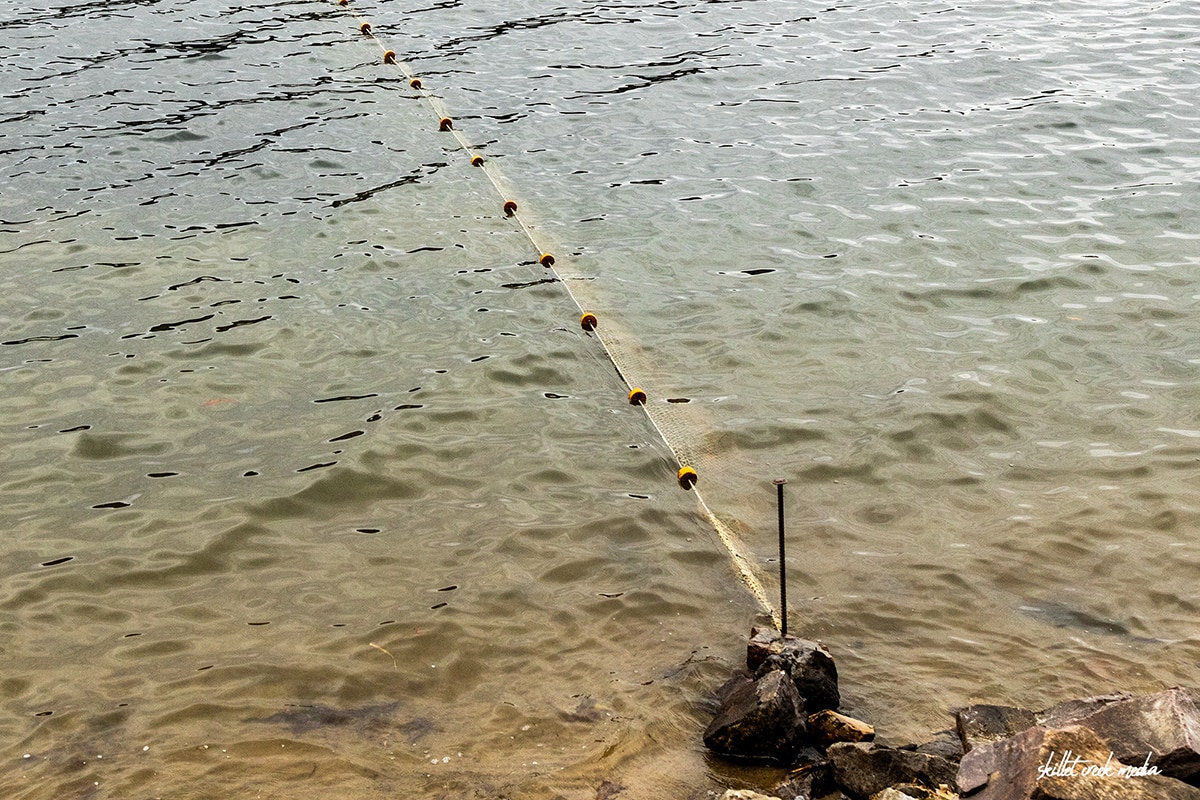Spring has sprung at Devil's Lake State Park, and with it comes a charming little…
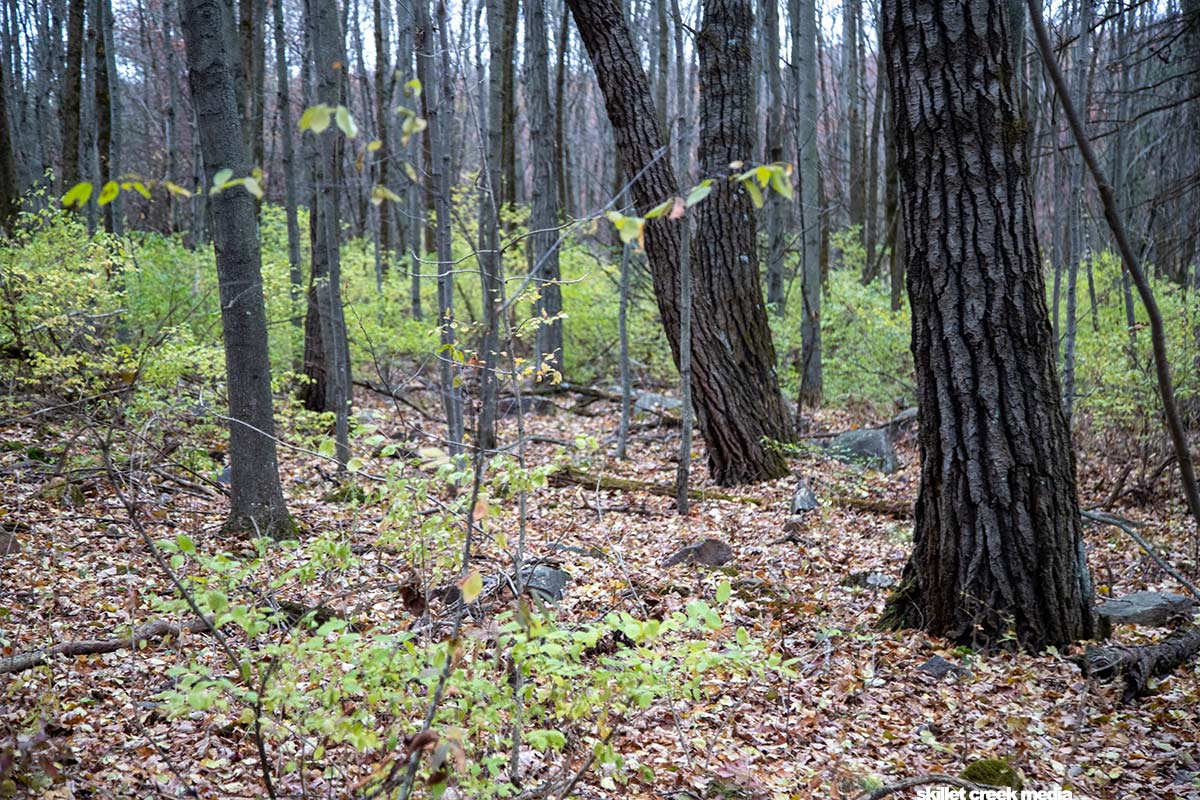
November is a great time of year for us “non-sciency” types to get a feel for the health of our forests. How? Well, pretty much everything you see that is green (and some red), probably shouldn’t be there. They’re invasives!
Healthy
So look at this photo below. This gives you a good idea of what a healthy forest in central Wisconsin should look like this time of year. You can see that there’s not much green out there now other than a few pine trees. There’s not much in the way of shrubs either. Even fallen wood isn’t that excessive.
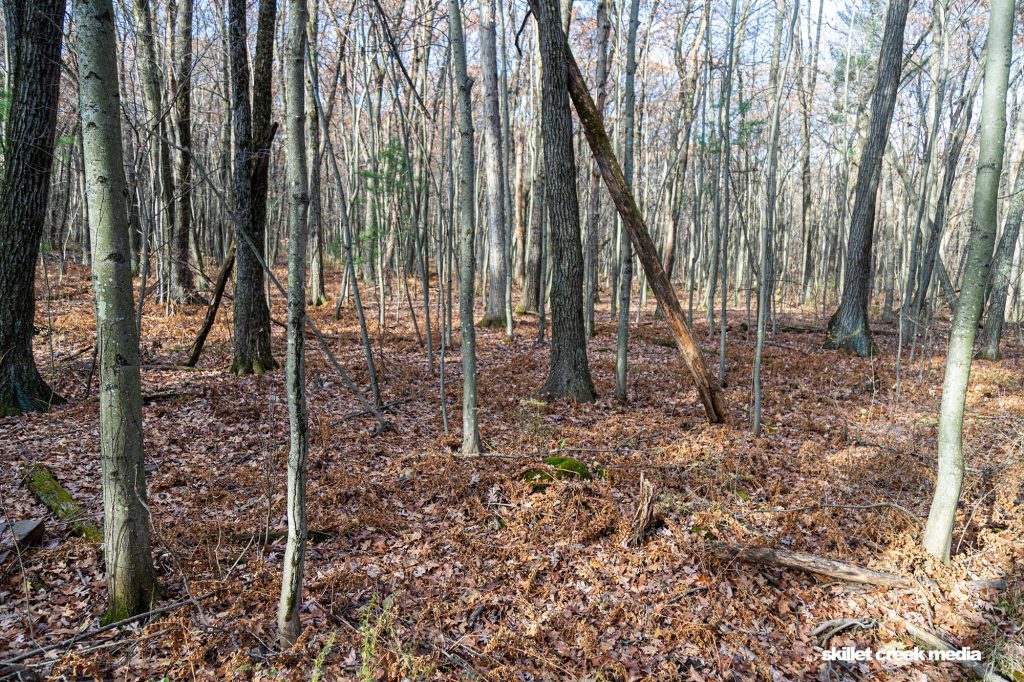
Less so…
The photo below was taken (like the one at the very top of the page) on Devil’s Lake State Park’s Uplands Trail. Look at all that green! This is mostly an invasive mix of Honeysuckle and Buckthorn. As you can see, invasive plants are often thickest along the trails where hikers tend to spread the seeds on their shoes.
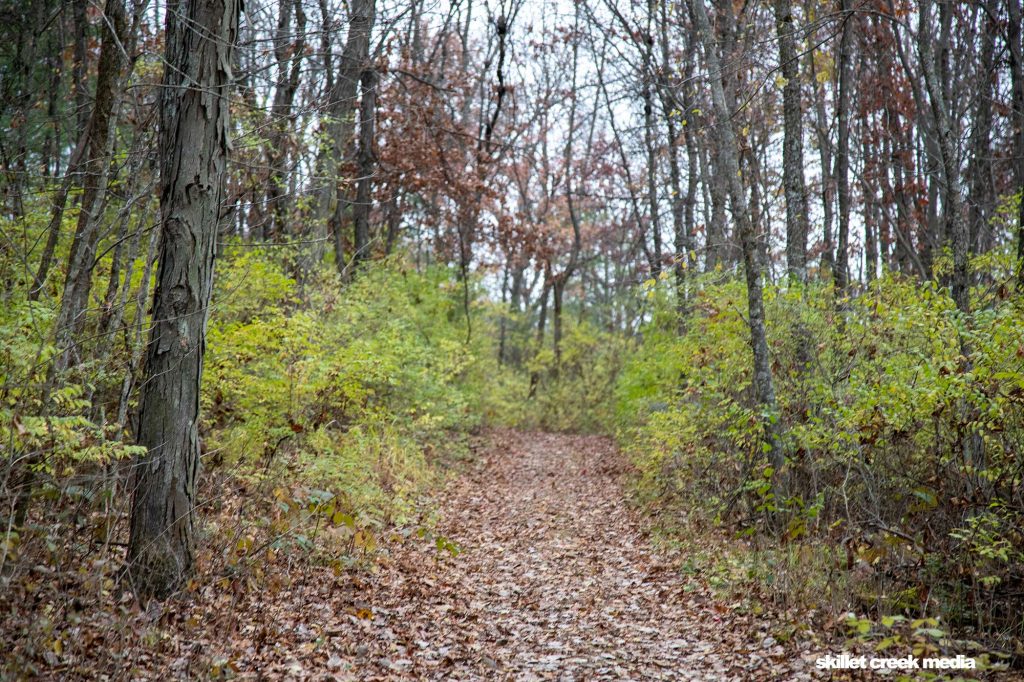
Another big problem at Devil’s Lake State Park is garlic mustard. Here’s what that looks like along the trail this time of year.
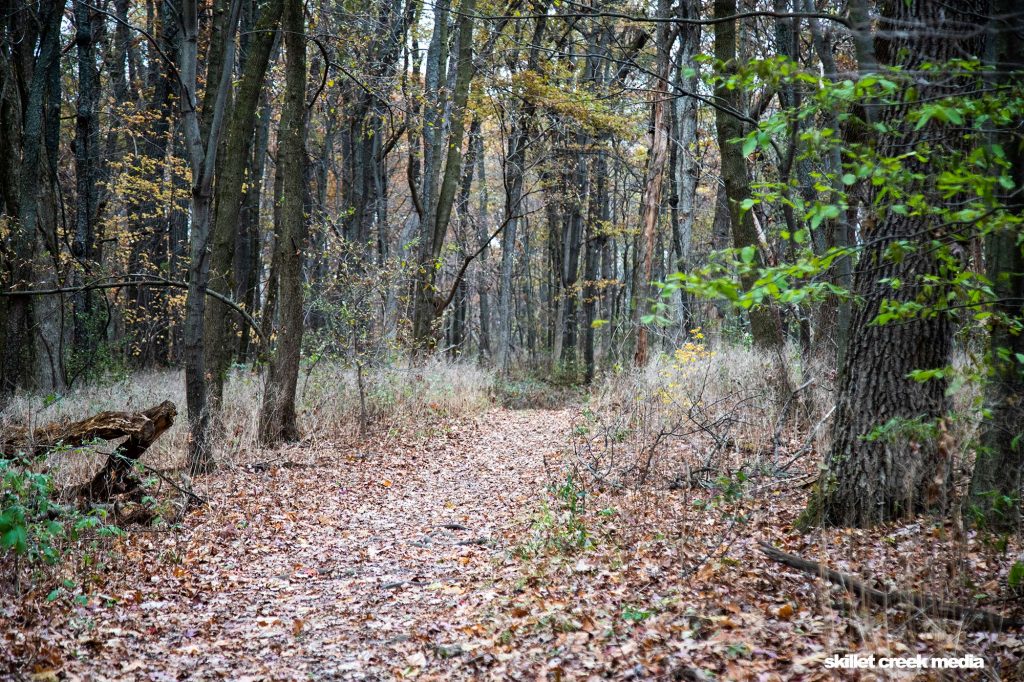
That “white” line about midway down the photo is a thick sea of dry garlic mustard. Again, it’s often thickest near hiking trails.
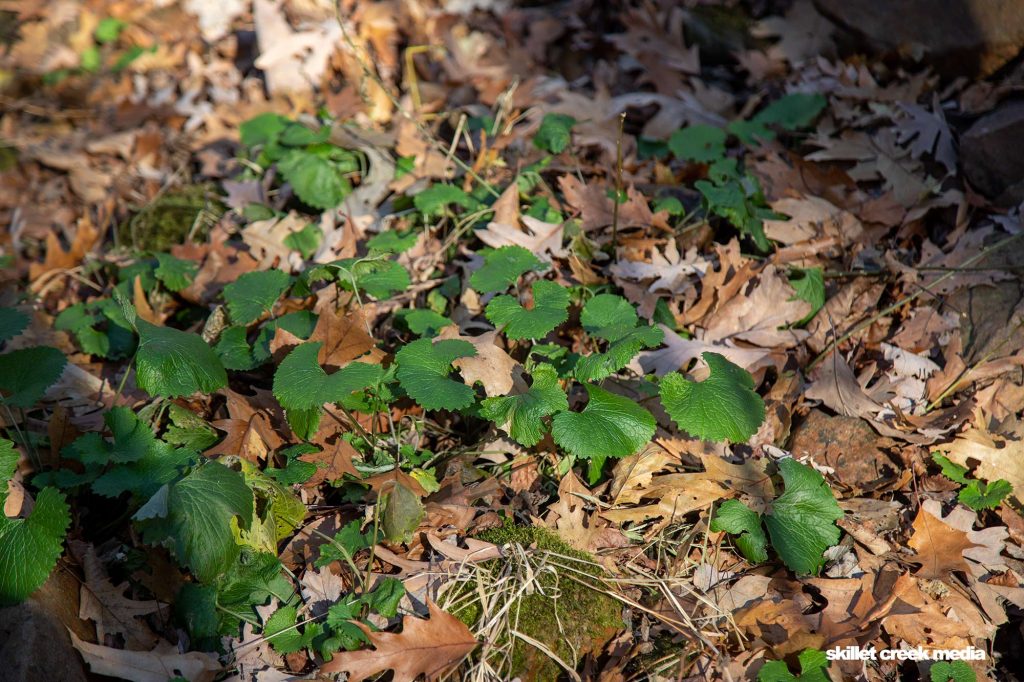
And just like many other invasives, young garlic mustard is still green now too. It will stay that way under the snow, which gives it a big head start in the spring!
The Problem With Invasives
And that’s the problem with invasives. They’re still green because they’re still collecting energy when all the local plants have gone to sleep. Because they start growing faster in the spring they can shade out, and push out our local plants and trees. According to the Wisconsin DNR, “Invasive shrubs such as non-native buckthorns and honeysuckles prevent the regeneration of young trees, causing a long term but very serious impact on forestry in Wisconsin – a $28 billion a year industry with 66,000 jobs. In Wisconsin alone, 2015 spending on invasive species totaled approximately $8.4 million.”
Another problem with invasives is that they crowd out food sources for native wildlife. The WDNR says that about 42% of the species on the federal endangered of threatened or endangered species lists are at risk primarily because of invasive species. Learn more.
What can we do?
Well, we have to get rid of the stuff! As much as I’d like to spread some hope and sunshine on this issue, the truth is, that it’s probably not going to happen. The amount of time and money needed, not to mention the will, is just not there at the moment. In many ways, at Devil’s Lake State Park, controlling invasives has come down to an occasional organized, but mostly symbolic garlic pull, a few under-supported volunteer groups that come and go, and one amazing, but Don Quixote type guy who spends weekends alone cutting honeysuckle in the park’s Steinke Basin area. So really, I don’t know what we do other than keep sharing the information and hope that someday the will to do something substantial takes hold with people who could actually make the difference. Truth be told, without the park itself taking a lead in funding and organizing serious invasive removal efforts, it’s a battle we’re going to continue to lose.
I’m reminded of this quote from naturalist and local hero, Aldo Leopold, “One of the penalties of an ecological education is that one lives alone in a world of wounds. Much of the damage inflicted on land is quite invisible to laymen. An ecologist must either harden his shell and make-believe that the consequences of science are none of his business, or he must be the doctor who sees the marks of death in a community that believes itself well and does not want to be told otherwise.”

For nearly 2 decades the Skillet Creek blog has focused on 3 main goals; To inspire you to visit and explore the Devil’s Lake region, to help you get the most your visit by sharing tips, events, and other helpful information. Lastly to advocate for our environment & wildlife and talk about how we can keep our natural areas amazing now and into the future! That last goal can sometimes cause controversy, but it’s the only way we can accomplish the first two. – Derrick Mayoleth, Owner.

